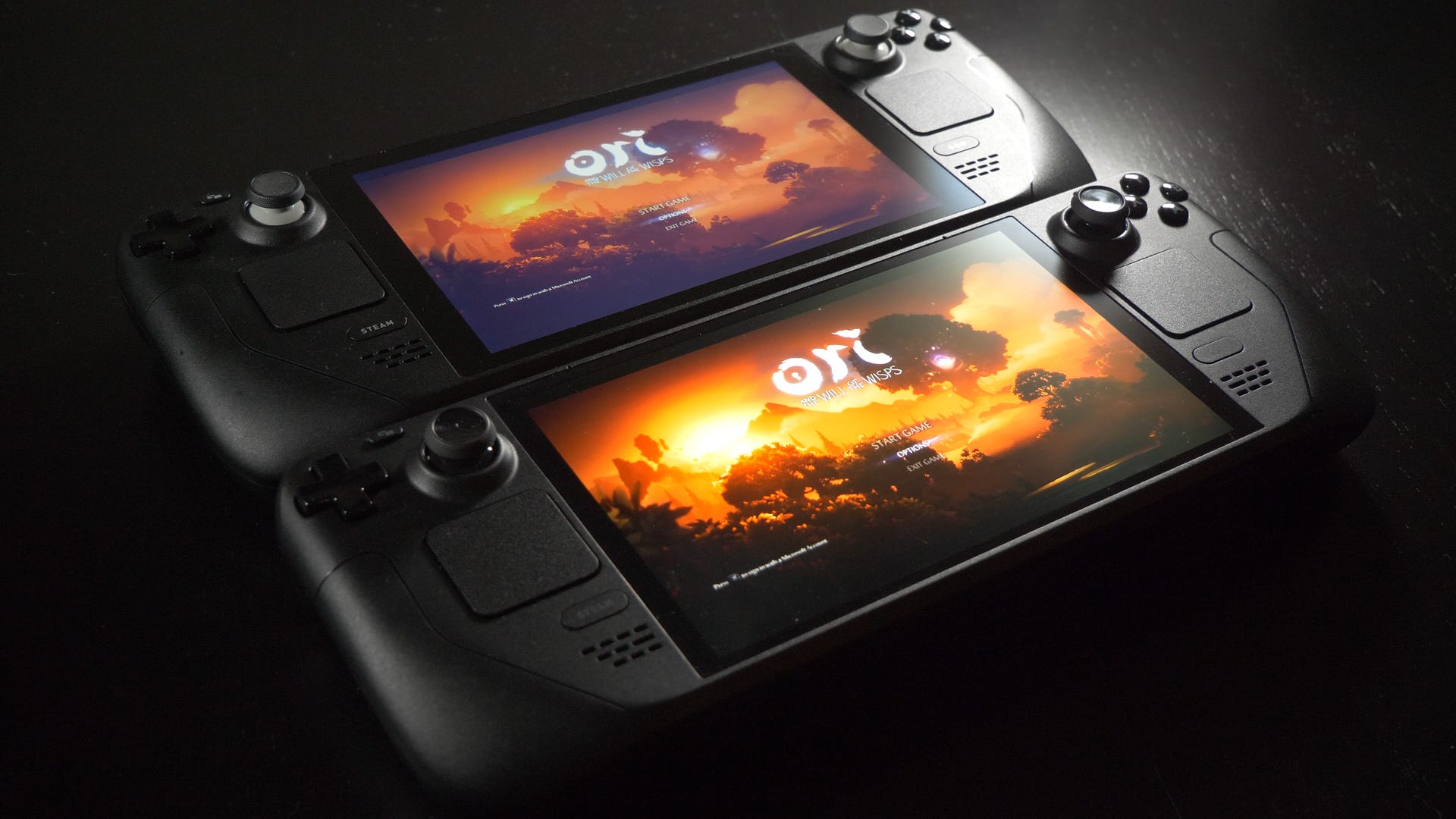Steam Deck OLED review: a beautiful display upgrade - and so much more
Let's be clear, the brand new Steam Deck OLED isn't just the original machine with a brand new display. Excluding the outer shell, it's essentially a top to bottom revamp of the entire machine and perhaps the most extensive mid-generation 'console refresh' I've seen. But let's give that beautiful new display its due: it's bigger, brighter, runs at 90Hz and in combination with enhancements to SteamOS, you get full HDR support too. Boot up Ori and the Will of the Wisps for some class-leading HDR and you quickly realise that Valve has delivered home cinema display fidelity to a handheld games machine. It's simply stunning. Side-by-side with the original Deck, the handheld itself looks much the same as the first generation offering but as soon as you power up the unit, you'll see an extraordinary, night and day improvement over the standard model. Valve cites a million to one contrast ratio (par for the course with OLED) along with a 110 percent P3 wide colour gamut and a 90Hz refre


Let's be clear, the brand new Steam Deck OLED isn't just the original machine with a brand new display. Excluding the outer shell, it's essentially a top to bottom revamp of the entire machine and perhaps the most extensive mid-generation 'console refresh' I've seen. But let's give that beautiful new display its due: it's bigger, brighter, runs at 90Hz and in combination with enhancements to SteamOS, you get full HDR support too. Boot up Ori and the Will of the Wisps for some class-leading HDR and you quickly realise that Valve has delivered home cinema display fidelity to a handheld games machine. It's simply stunning.
Side-by-side with the original Deck, the handheld itself looks much the same as the first generation offering but as soon as you power up the unit, you'll see an extraordinary, night and day improvement over the standard model. Valve cites a million to one contrast ratio (par for the course with OLED) along with a 110 percent P3 wide colour gamut and a 90Hz refresh rate. In terms of peak brightness with HDR highlights, the display hits 1000 nits - a huge improvement over the lacklustre 400 nits in the original LCD. The display itself is larger too: 7.4 inches up against the 7-inch screen of the launch machine, which essentially translates into smaller bezels.
The 90Hz refresh is accompanied by tweaks to SteamOS's frame-rate limiting capabilities. On the LCD model, users have control over the target frame-rate as defined by the refresh rate you set on the screen. In the review software I tested, this is reduced to a simple slider: define the frame-rate cap you want, and SteamOS sets up the 90Hz display accordingly. There's still no VRR, but the screen is configurable from 45Hz up to 90Hz. Choose 30fps, for example, and the display still refreshes at 90Hz, repeating the same frame three times. Choose 40fps and the display drops back to 80Hz, doubling every frame - you get the idea.
What's Your Reaction?






















